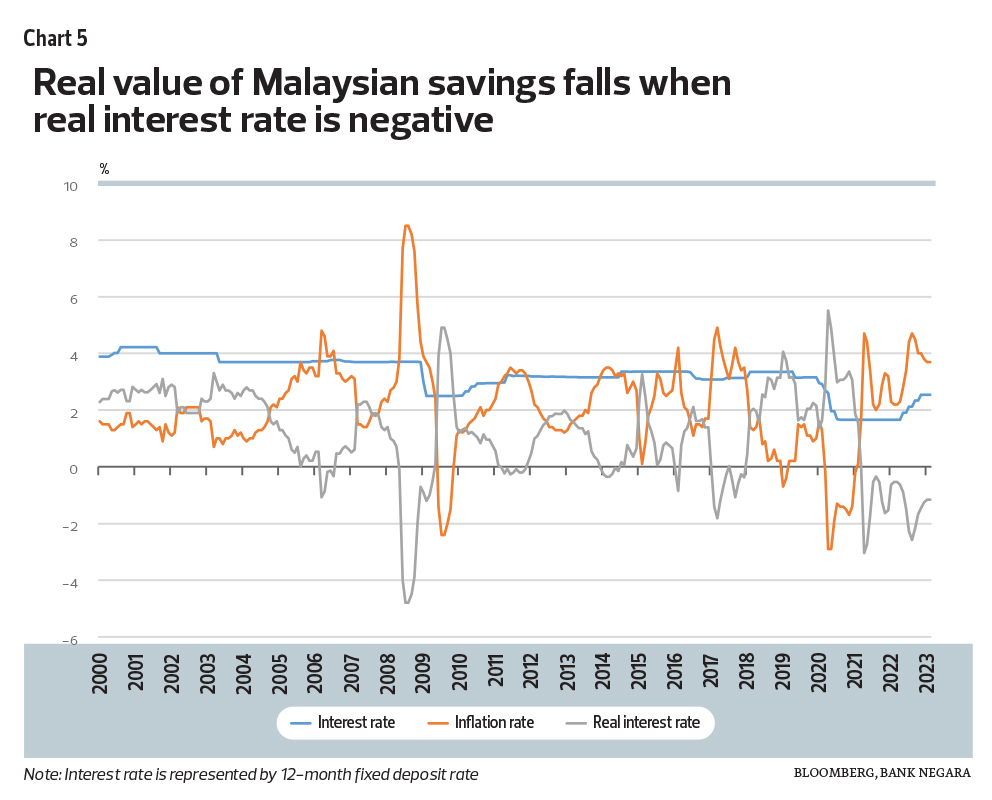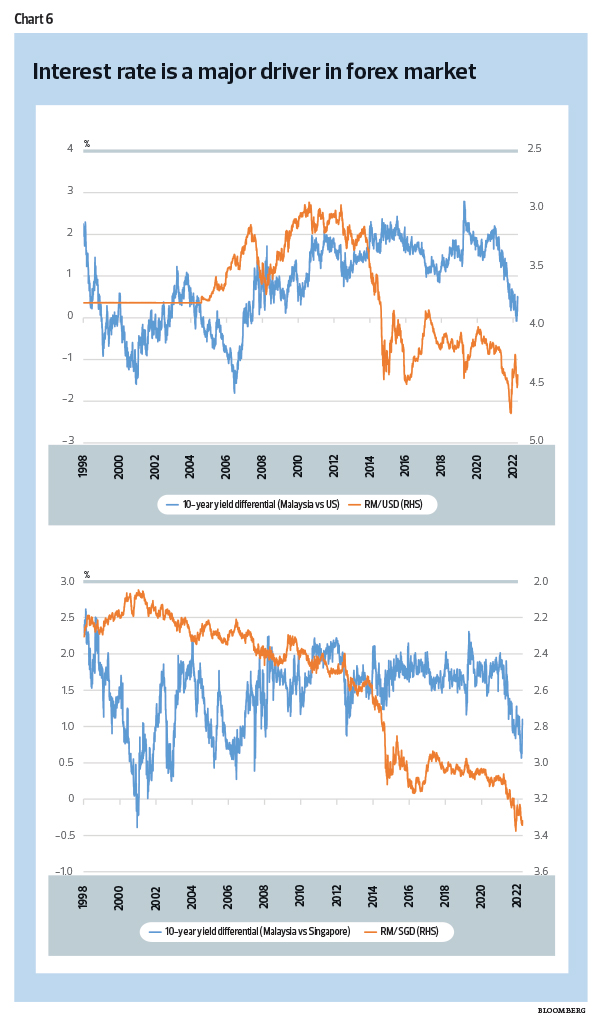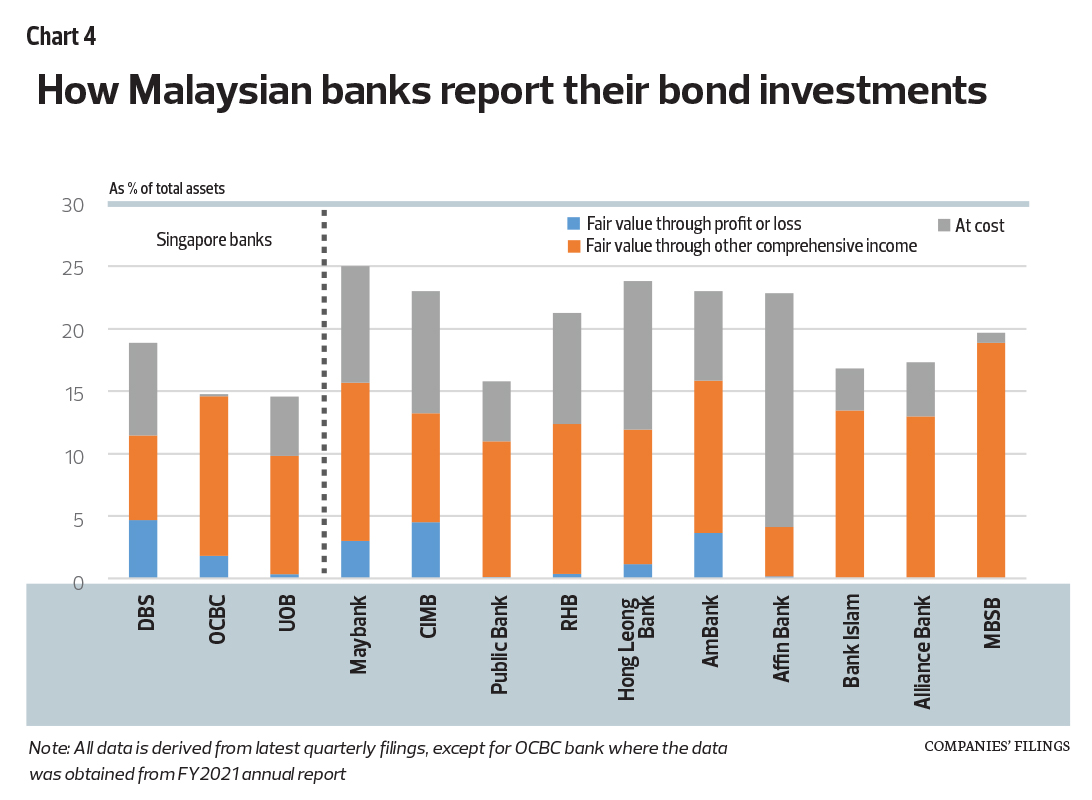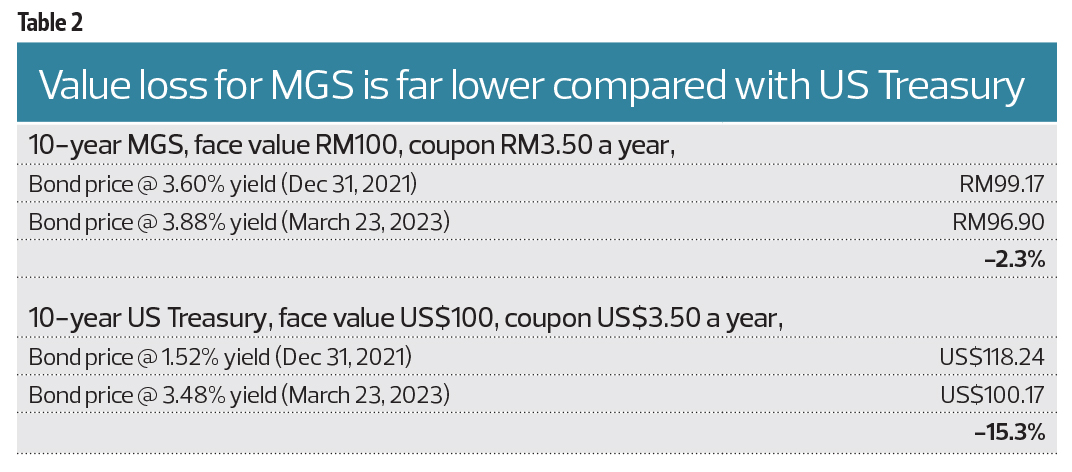Dec 2022
Keep INVESTING Simple and Safe (KISS) ****Investment Philosophy, Strategy and various Valuation Methods**** The same forces that bring risk into investing in the stock market also make possible the large gains many investors enjoy. It’s true that the fluctuations in the market make for losses as well as gains but if you have a proven strategy and stick with it over the long term you will be a winner!****Warren Buffett: Rule No. 1 - Never lose money. Rule No. 2 - Never forget Rule No. 1.
Thursday, 18 May 2023
Public Bank (RM 3.97 per share on 18/5/2023)
Dec 2022
Sunday, 14 May 2023
Warren Buffett: Earnings and not book value are what determine the value of a business.
@5.45
Earnings are what determine value and not book value. Book value is not a factor we consider. Future earnings are a factor we consider.
Earnings have been poor for many great Japanese companies. If you think the return on equity of the Japanese companies is going to increase dramatically, then you are going to make a lot of money in Japanese stocks. But the returns on equity of Japanese businesses have been quite low, and that makes a low price to book ratio very appropriate because earnings are measured against books.
A company earning 5% on book value, I do not want to buy it at book value, if I think it is going to keep earning 5% on book value. A low price to book ratio means nothing to us. It does not intrigue us. In fact, if anything, we are less likely to look at something that sells at a lower value in relation to book than something that sells at a higher relation to book. The chances are we are looking at a poor business in the first case and a good business in the second case.
Coastal is one of the leading shipbuilders in Malaysia.
Coastal is one of the leading shipbuilders in Malaysia.
1. It specialises in offshore support vessel (OSV) and marine transportation vessels.
3. In 2013, Coastal diversified into the oil and gas upstream sector with its entry into the jack-up drilling rig business.
- In 2013, it fabricated a jack-up Gas Compression Service Unit (GCSU) for use by Mexico's national oil company, Petroleos Mexicanos. It sold its maiden jack-up rig, Coastal Driller 4001, for RM877.2m in 3Q16.
- It fabricated its second Jack-up Gas Compression Service Unit (JUGCSU) in 4Q13 and is contracted under a USD372 million, 12-year charter for Mexico's state-owned company, Petroleos Mexicanos, from January 2016 onwards.
4. In December 2021, Coastal secured a 10-year mega contract worth USD1.06 bn from Petroleos Mexicanos to undertake an onshore gas conditioning plant project with a gas conditioning capacity of 300 million standard cubic meter feet per day (MMCFD) in Tierra Blanca, Veracruz. Mexico.
Y2022
COASTAL's adjusted core earnings more than tripled to RM173.4 m y-o-y.
- riding on the back of a jump in revenue of 44.0%,
- a more than doubling of Other Income to RM98.9 m and
- a sizable share of profit from the group's JV of RM51.5 m in FY22,
The surge of revenue in FY22 was driven primarily by
- a more than tripling of revenue from the Vessel Chartering Segment to RM64.09 m, as a result of the acquisition of liftboat chartering business in February 2021;
- coupled with increased revenue contribution from the Gas Processing Segment (+17.7%), arising from the contribution by the Perdiz onshore gas plant and construction revenue by the Papan onshore gas plant project.
The sharp increase in Other Income was largely due to
- interest income earned from loans granted to the group's JV
- as well as a disposal gain on offshore support vessel of RM33.2 m.
The group recorded adjusted FY22 EPS of 32.92 sen.
Thursday, 11 May 2023
Warren Buffett: How to Easily Value almost Any Business
Tuesday, 25 April 2023
Bond investing can sometimes fail
Saturday, 22 April 2023
Salutica share price had a big drop after having increased from RM 0.375 to a high of RM 1.72 over 13 days from 31/3/2023.
| Date | Adj Close Price | Volume |
|---|---|---|
| 3/1/2023 12:00:00 AM | 0.26 | 122,800 |
| 4/1/2023 12:00:00 AM | 0.255 | 112,200 |
| 5/1/2023 12:00:00 AM | 0.255 | 469,000 |
| 6/1/2023 12:00:00 AM | 0.25 | 129,700 |
| 9/1/2023 12:00:00 AM | 0.255 | 1,733,000 |
| 10/1/2023 12:00:00 AM | 0.255 | 62,000 |
| 11/1/2023 12:00:00 AM | 0.25 | 312,100 |
| 12/1/2023 12:00:00 AM | 0.255 | 666,500 |
| 13/1/2023 12:00:00 AM | 0.26 | 421,600 |
| 16/1/2023 12:00:00 AM | 0.26 | 221,200 |
| 17/1/2023 12:00:00 AM | 0.28 | 5,650,900 |
| 18/1/2023 12:00:00 AM | 0.275 | 596,300 |
| 19/1/2023 12:00:00 AM | 0.275 | 425,100 |
| 20/1/2023 12:00:00 AM | 0.27 | 507,100 |
| 25/1/2023 12:00:00 AM | 0.275 | 674,300 |
| 26/1/2023 12:00:00 AM | 0.295 | 4,067,600 |
| 27/1/2023 12:00:00 AM | 0.295 | 873,300 |
| 30/1/2023 12:00:00 AM | 0.285 | 1,744,400 |
| 31/1/2023 12:00:00 AM | 0.3 | 5,086,600 |
| 2/2/2023 12:00:00 AM | 0.33 | 6,305,400 |
| 3/2/2023 12:00:00 AM | 0.335 | 4,915,400 |
| 7/2/2023 12:00:00 AM | 0.315 | 1,166,300 |
| 8/2/2023 12:00:00 AM | 0.295 | 1,853,000 |
| 9/2/2023 12:00:00 AM | 0.3 | 739,200 |
| 10/2/2023 12:00:00 AM | 0.315 | 1,443,900 |
| 13/2/2023 12:00:00 AM | 0.305 | 960,400 |
| 14/2/2023 12:00:00 AM | 0.3 | 516,200 |
| 15/2/2023 12:00:00 AM | 0.285 | 1,524,500 |
| 16/2/2023 12:00:00 AM | 0.295 | 528,000 |
| 17/2/2023 12:00:00 AM | 0.295 | 112,800 |
| 20/2/2023 12:00:00 AM | 0.29 | 222,000 |
| 21/2/2023 12:00:00 AM | 0.28 | 883,700 |
| 22/2/2023 12:00:00 AM | 0.275 | 224,000 |
| 23/2/2023 12:00:00 AM | 0.28 | 83,500 |
| 24/2/2023 12:00:00 AM | 0.28 | 322,600 |
| 27/2/2023 12:00:00 AM | 0.245 | 7,673,800 |
| 28/2/2023 12:00:00 AM | 0.24 | 1,040,200 |
| 1/3/2023 12:00:00 AM | 0.24 | 560,400 |
| 2/3/2023 12:00:00 AM | 0.24 | 376,200 |
| 3/3/2023 12:00:00 AM | 0.24 | 1,895,200 |
| 6/3/2023 12:00:00 AM | 0.245 | 204,500 |
| 7/3/2023 12:00:00 AM | 0.25 | 259,700 |
| 8/3/2023 12:00:00 AM | 0.25 | 296,900 |
| 9/3/2023 12:00:00 AM | 0.255 | 171,400 |
| 10/3/2023 12:00:00 AM | 0.25 | 345,200 |
| 13/3/2023 12:00:00 AM | 0.245 | 348,100 |
| 14/3/2023 12:00:00 AM | 0.25 | 518,700 |
| 15/3/2023 12:00:00 AM | 0.25 | 85,500 |
| 16/3/2023 12:00:00 AM | 0.255 | 190,500 |
| 17/3/2023 12:00:00 AM | 0.265 | 195,200 |
| 20/3/2023 12:00:00 AM | 0.26 | 215,700 |
| 21/3/2023 12:00:00 AM | 0.26 | 219,000 |
| 22/3/2023 12:00:00 AM | 0.255 | 137,600 |
| 23/3/2023 12:00:00 AM | 0.255 | 69,900 |
| 24/3/2023 12:00:00 AM | 0.26 | 54,900 |
| 27/3/2023 12:00:00 AM | 0.245 | 86,400 |
| 28/3/2023 12:00:00 AM | 0.25 | 40,000 |
| 29/3/2023 12:00:00 AM | 0.29 | 2,923,500 |
| 30/3/2023 12:00:00 AM | 0.285 | 663,800 |
| 31/3/2023 12:00:00 AM | 0.375 | 33,136,100 |
| 3/4/2023 12:00:00 AM | 0.395 | 10,750,900 |
| 4/4/2023 12:00:00 AM | 0.495 | 37,114,600 |
| 5/4/2023 12:00:00 AM | 0.46 | 26,555,700 |
| 6/4/2023 12:00:00 AM | 0.555 | 25,778,300 |
| 7/4/2023 12:00:00 AM | 0.555 | 12,681,300 |
| 10/4/2023 12:00:00 AM | 0.68 | 50,511,800 |
| 11/4/2023 12:00:00 AM | 0.715 | 22,859,300 |
| 12/4/2023 12:00:00 AM | 0.765 | 37,209,300 |
| 13/4/2023 12:00:00 AM | 0.875 | 32,863,300 |
| 14/4/2023 12:00:00 AM | 1.09 | 56,461,800 |
| 17/4/2023 12:00:00 AM | 1.41 | 41,578,500# |
| 18/4/2023 12:00:00 AM | 1.65 | 60,618,300 |
| 19/4/2023 12:00:00 AM | 1.16 | 65,105,300 |
| 20/4/2023 12:00:00 AM | 0.815 | 100,220,300 |
2023-04-17
| 20/4/2023 Price per share RM 0.815 |
| Market Capital (RM) | EPS (cent) | ||||
| Number of Share | P/E Ratio |
Trade-off of limited interest rate hikes by Bank Negara
Bank Negara’s tempered OPR hikes limit interest rate risks for banking system …
… but there is a trade-off
- First, savers could have obtained more had interest rates gone higher. With high inflation, savings are now earning negative real rates (that is, below inflation) (see Chart 5).
- Second, the trade-off is a weaker ringgit — and higher cost of living for all Malaysians.
The interest rate is the price of money (or credit or time, if one is inclined to be argumentative) — and it certainly is one of the major drivers in foreign exchange movements (see Chart 6); although this relationship is by no means linear or perfect.
- Can a country maintain a relatively low interest rate while also stabilising its exchange rate?
- Is the weak ringgit a function of the interest rate differentials between the ringgit and other currencies or are there even more dominant factors?
Friday, 21 April 2023
How banks account for their bond holdings and treatments for unrealised gains and losses.
Banks have some discretion in terms of accounting for their bond holdings (which is part of financial assets and liabilities) and treatments for unrealised gains and losses.
- Under IFRS 9 (known as MFRS 9 in Malaysia and SFRS 109 in Singapore), bond investments can be measured at cost (if they are intended to be held to maturity) or at fair values (if they may be sold before maturity).
- And there are guidelines for treating changes in fair value measurements — they can be reflected through either the profit and loss (FVTPL) or other comprehensive income (FVOCI).
Under the first option, gains (losses) are recognised in the Income Statements, meaning reported net profit for the period is higher (lower).
Under the second option, gains (losses) are disclosed below the net profit line in the Statements of Comprehensive Income. In this case, the gains (losses) have no impact on reported net profit.
However, both the FVTPL and FVOCI options have balance sheet effects — unrealised gains (losses) will increase (decrease) retained earnings and shareholders’ equity (see Chart 4 for the different approaches in the accounting treatments for bond investments by Malaysian banks).
For instance, Affin Bank and, to a lesser extent, Hong Leong Bank have the highest proportions of bond investments measured at cost, which could indicate that, in the current environment, both their reported net profit and equity may be “overstated”. By comparison, the other seven local banks have, on average, mark-to-market some 63% of their bond holdings. In addition, Maybank, CIMB and Ambank would have adjusted their reported profit lower for a portion of these unrealised losses.
As mentioned above, bond holdings that are mark-to-market will affect balance sheets — unrealised losses or impairments will drag on the capital adequacy ratio of banks.
Herein lies the importance of Bank Negara’s more tempered path for interest rate hikes.
- The smaller interest rate hikes mean lower unrealised capital losses, thus limiting the negative impact on lending capacity and/or need to raise fresh capital.
- Smaller interest rate hikes also help keep a lid on the burden for debt servicing, for leveraged households, businesses as well as the government. Government debt and liabilities totalled RM1.5 trillion, or 83% of GDP.
Interest rate risks for the overall Malaysian banking system is low.
Is SVB a canary in the coal mine?
Clearly, the situation is quite different in Malaysia. For starters, pandemic cash handouts were far smaller and, while deposits also rose during the pandemic — owing to loan moratoriums and lower spending — it was nowhere near the scale of that in the US. Total deposits increased from RM1.968 trillion to RM2.186 trillion between March 2020 and March 2022, or equivalent to just about 11% growth (see Chart 2).
And while investments in government and corporate bonds also rose at the outset of the pandemic — as a result of excess deposits and lower loan demand — the increase was small, from 17.9% in January 2020 to a high of 19.7% of total assets in August 2021. Currently, the average bond holdings among Malaysian banks is 19.1% of total assets, or about RM645.2 billion, compared with 24% in the US banking system. Of note, 90% of the total are made up of local bonds — only 10% of which are foreign currency denominated bonds (see Chart 3).
Bank Negara’s tempered OPR hikes limit interest rate risks for banking system …
More importantly, Bank Negara Malaysia has raised the overnight policy rate (OPR) by only 1%, from 1.75% to 2.75% over the same period (compared with the 4.75% hike in the US FFR). Yields for the benchmark 10-year Malaysia Government Securities (MGS) have risen by even less — from 3.6% at the start of 2022 to 3.88% currently. The yield differential is less than 0.3%. This means the drop in value for 10-year MGS is only about 2.3%, based on our back-of-the-envelope calculations (see Table 2).
This is a huge difference compared to the 15.3% drop in value for the 10-year Treasury. Furthermore, unrealised losses for shorter duration bonds will be much lower. For instance, more than half of Maybank’s bond holdings have durations of less than five years.
In short, total unrealised losses for local banks should be much lower. (Incidentally, the majority of loans [79%] are based on floating interest rates, which are repriced immediately on Bank Negara’s policy rate changes.) Therefore, we think interest rate risks for the overall Malaysian banking system is low. Naturally, some banks will be affected more than others. For instance, Maybank, CIMB, Hong Leong Bank, Ambank, Affin Bank and RHB Bank have a higher percentage of bonds on their balance sheets compared with banks such as Public Bank, Bank Islam, Alliance Bank and MBSB. This could be due to a combination of factors, including deposit inflows, the ability to make loans and the target customer market.
The fallout of Silicon Valley Bank reverberated around the world
The fallout reverberated around the world — turning into a crisis of confidence in the global financial system.
In Europe, the Swiss government instructed UBS Group AG to mount an emergency rescue of compatriot Credit Suisse Group AG, which, incidentally, is already beset with its own set of problems.
Since the SVB turmoil, banks have lost tens of billions in market value, some more than others.
For instance, leading Japanese banks have been harder hit, as they had accumulated foreign bonds in recent years — in the search for yields on the back of more than two decades of a zero interest rate policy, crowding-out by the Bank of Japan as well as slow loans growth in the domestic market.
https://www.theedgemarkets.com/node/662043
Silicon Valley Bank became the second-largest bank to fail in US history
For a quick recap, Silicon Valley Bank (SVB) became the second-largest bank to fail in US history, the biggest being Washington Mutual Bank in 2008, following a run on the bank.
What happened?
SVB had an abnormally high percentage of bond holdings (56% of total assets) on its balance sheet and as unrealised losses mounted, worried depositors — mostly Silicon Valley start-ups and venture-capital firms with large, uninsured deposits (of more than US$250,000 per account) — rushed to withdraw their money.
The sudden huge outflow of deposits forced SVB to liquidate its bonds at current market values (losses), which then tipped it into insolvency (where the values of liabilities exceeded assets).
The bank had to be taken over by FDIC on March 10 to stem contagion fears.
Another regional bank, Signature Bank, suffered the same fate and went into FDIC receivership just days later.
Despite the quick actions, worries continued to spread to other smaller banks, all of which continue to suffer substantially higher-than-normal deposit withdrawals.
https://www.theedgemarkets.com/node/662043
The issues for SVB are, to a certain extent, idiosyncratic —
- an exceptionally narrow customer base and
- high uninsured deposits (according to various reports, they ranged from 88% to 96% of total deposits),
- abnormally high long-dated bond holdings relative to traditional loans and,
- critically, failure to hedge interest rate risks.
The overall US banking system is, no doubt, suffering from withdrawal symptoms — from excessive government stimulus, near-zero interest rates and massive quantitative easing over the past few years. At the outset of the pandemic, banks were inundated with large deposit inflows — excess savings surged from generous government handout, coupled with little avenue to spend during lockdowns.
Bank deposits increased by nearly US$5 trillion, or 35%, from about US$13.4 trillion in March 2020 to US$18.1 trillion in March 2022 (see Chart 1). Meanwhile, loans to businesses were limited during the pandemic. Banks had to put all these excess cash to work, and many ended up buying Treasuries and especially MBS (new mortgages and refinancing activities saw a huge jump as the housing sector boomed). Then the Fed started hiking interest rates aggressively.
Situation in Malaysia is quite different
Clearly, the situation is quite different in Malaysia.
For starters, pandemic cash handouts were far smaller and, while deposits also rose during the pandemic — owing to loan moratoriums and lower spending — it was nowhere near the scale of that in the US.
Total deposits increased from RM1.968 trillion to RM2.186 trillion between March 2020 and March 2022, or equivalent to just about 11% growth (see Chart 2).
Friday, 31 March 2023
UK State pension age rise to 68 will not be brought forward yet
By Kevin Peachey & Sam Francis
A rise in the state pension age to 68 will not be brought forward yet, the government has announced.
Those born on or after 5 April 1977 will be the first cohort to work to 68, under current plans. A 2017 government review suggested expanding this to include those born in the late 1960s.
The work and pensions secretary said the pension age would not be changed until a further review was carried.
A decision is now expected in 2026, after the next general election.
By law the government is required to examine planned changes to the system every six years.
A recent report found life expectancy for retiring Britons is now two years lower than when the government last reviewed the state pension age in 2017.
Labour said increases in life expectancy were being "dragged down" by a "rising tide of poverty".
A separate review by Baroness Neville-Rolfe looking at what factors the government should take into account when setting the pension age was published on Thursday.
And on Thursday, a further review was commissioned by Work and Pensions Secretary Mel Stride to look into raising the state pension age.
A further study was needed as the previous reviews were "not able to take into account significant external challenges including impact of the Covid pandemic and global inflation caused by Putin's illegal wat in Ukraine", Mr Stride said.
The new review will report within two years of the new parliament, he added.
Labour supported the government's position, but shadow work and pensions secretary John Ashworth said the government had last year said bringing forward an increase in state pension age "was absolutely necessary for the long term sustainability of the public finances".
"Now it turns out with general election only a year away the and the government trailing so badly in the polls, not raising the state pension age is not so reckless after all," he added.
The state pension is a monthly payment currently made to 12.5 million people who have reached qualifying age and have paid enough in national insurance contributions.
Next week, the amount paid will increase by 10.1% in line with the rising cost of living.
That means it will be worth:
- £203.85 a week (up from £185.15) for the full, new flat-rate state pension (for those who reached state pension age after April 2016)
- £156.20 a week (up from £141.85) for the full, old basic state pension (for those who reached state pension age before April 2016)
Work and Pensions Secretary Mel Stride will make a statement in the House of Commons later to confirm the conclusions of the latest statutory review on the pension age.
The Daily Express newspaper, where the story first appeared, said Mr Stride would announce a new review to be carried out after the next election.
The main argument for accelerating a rise in the state pension age has always been that people are living for longer.
The state pension bill is estimated to grow by 35% to around £148bn by 2027-28 according to the Office for Budget Responsibility.
The Institute for Fiscal Studies, a leading economic research group, said that it was a "reasonable estimate" that increasing the state pension age by one year in the late 2030s would save the Government £8bn to £9bn a year in today's terms.
But experts point out that, although the cost of the state pension has been rising, life expectation has stalled recently.
There is also a wide difference in life expectancy across different parts of the country, with people generally likely to live longer in more affluent areas. That creates an added complication when setting a state pension age which is uniform across the UK.
At the moment, the age limit is based on ensuring no-one spends more than one third of their adult life in retirement.
State pension increases currently set out in legislation are:
- A gradual rise to 67 for those born on or after April 5, 1960
- A gradual rise to 68 between 2044 and 2046 for those born on or after April 5, 1977
Proposals to raise the state pension age are often controversial. Riots broke out on the streets of France after the French government decided to force through pension reforms without a vote in parliament.








